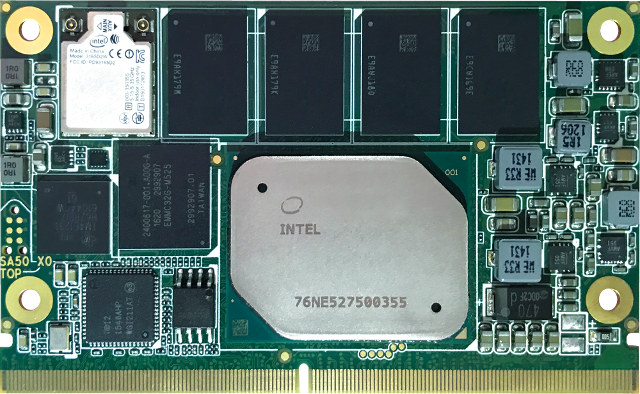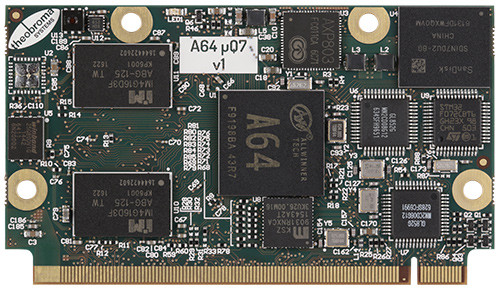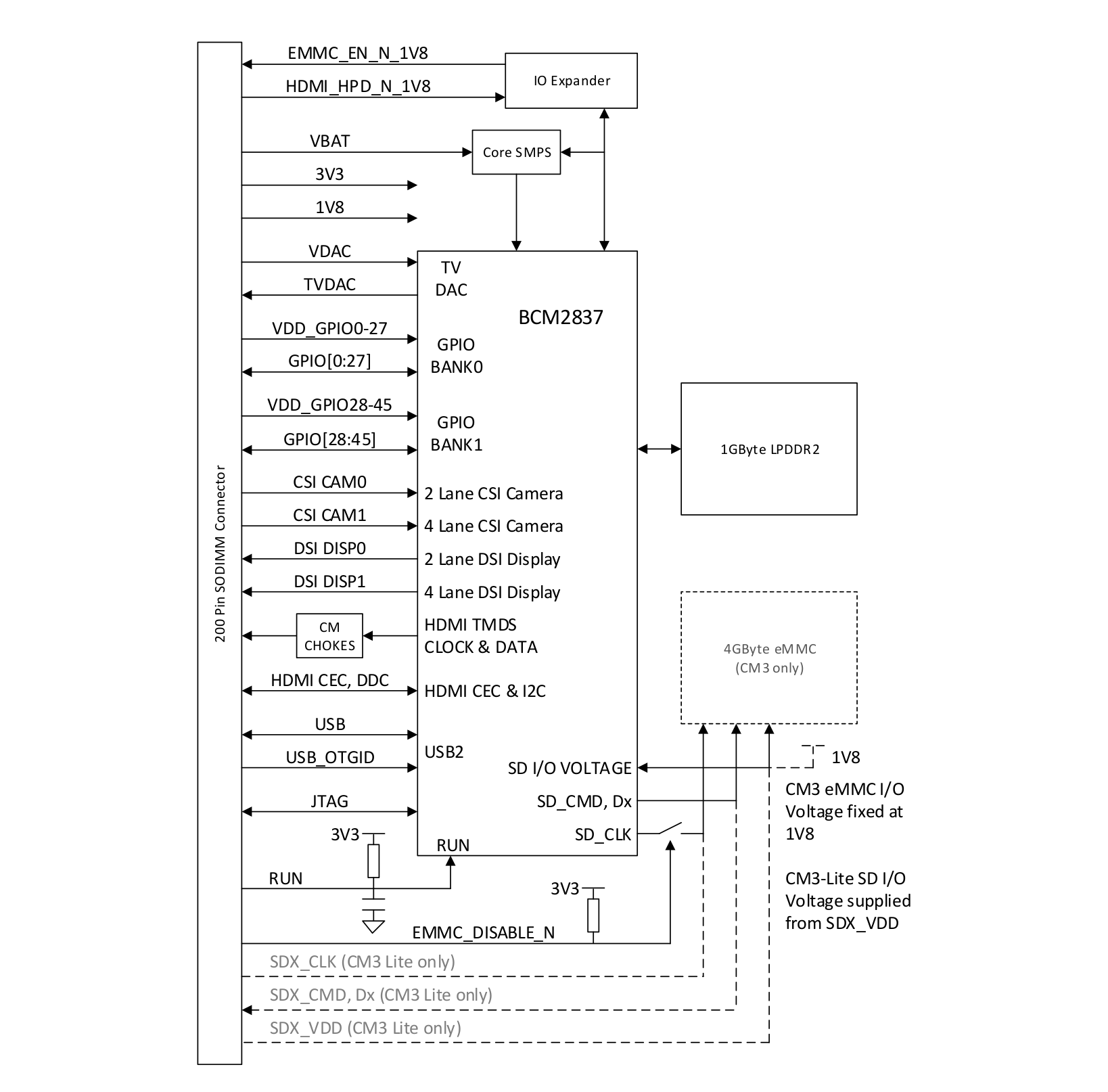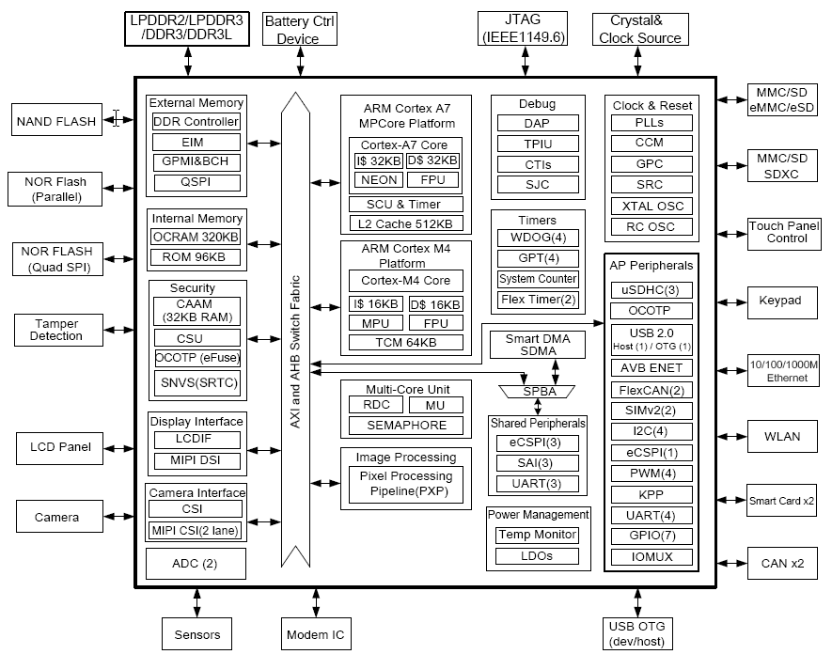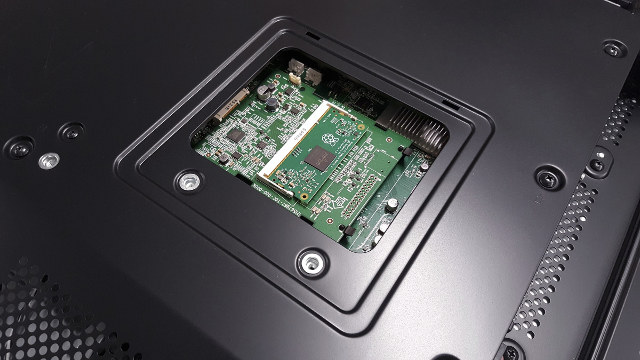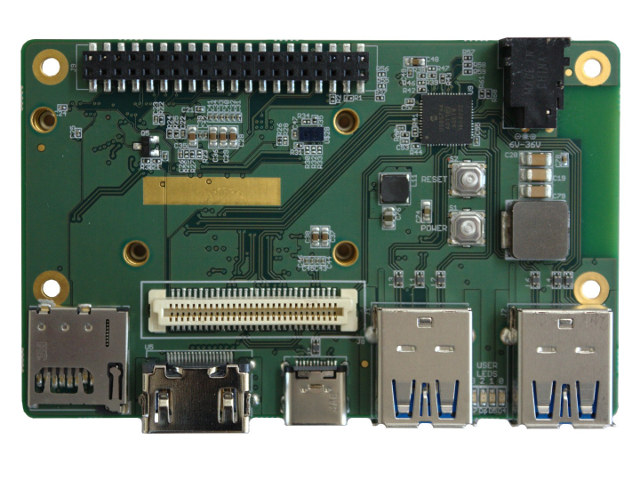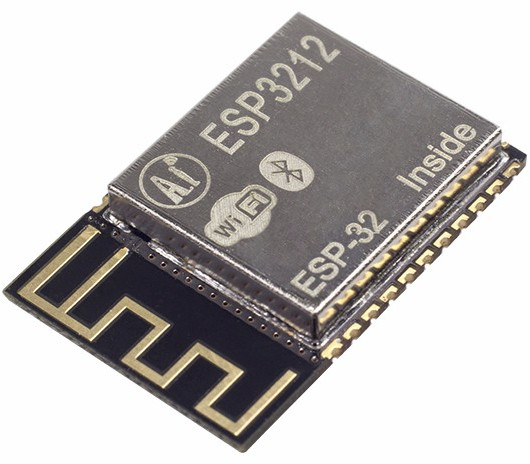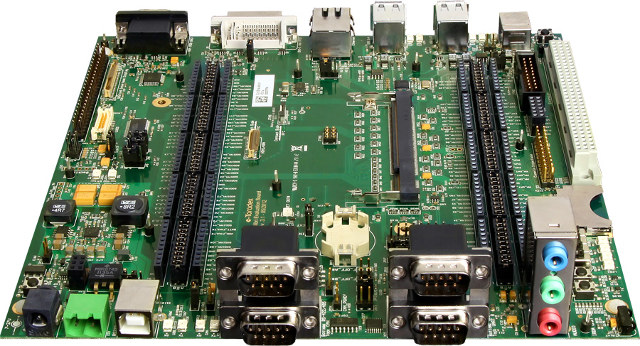congatec, a company specialized in embedded computer modules, single board computers and embedded design and manufacturing services, has just introduced their conga-SA5 system-on-module family compliant with SMARC 2.0 specifications, and powered by the latest Intel Apollo Lake processors. conga-SA5 SoM’s specifications: SoC (one of the list) Intel Atom x7-E3950 quad core processor @ 1.6 / 2.0 GHz with 2MB L2 cache, 18 EU Intel Gen 9 HD Graphics (12W TDP) Intel Atom x5-E3940 quad core processor @ 1.6 / 1.8 GHz with 2MB L2 cache, 12 EU Intel Gen 9 HD Graphics (9W TDP) Intel Atom x5-E3930 dual core processor @ 1.3 / 1.8 GHz with 2MB L2 cache 1MB, 12 EU Intel Gen 9 HD Graphics (6.5W TDP) Intel Celeron N3350 dual core processor @ 1.1 / 2.4 GHz with 1MB L2 cache, 12 EU Intel Gen 9 HD Graphics (6W TDP) Intel Pentium N4200 quad core processor @ […]
Theobroma Systems Introduces Micro Qseven Allwinner A64 System-on-Module
Theobroma Systems, an Austrian based engineering services and embedded systems solutions company, has been designing Allwinner based systems-on-module compliant with Micro Qseven standard for a while, starting with Allwinner A31 A31-μQ7 module in 2015. The company has now launched A64-μQ7 system-on-module powered by Allwinner A64 quad core Cortex A53 processor. A64-μQ7 module specifications: SoC – Allwinner A64 quad core ARM Cortex A53 processor with Mali-400MP2 GPU System Memory – Up to 2GB DDR3 on module Storage – Up to 64GB eMMC flash, Up to 16MB SPI NOR flash Display I/F (via edge connector) – HDMI 1.4 up to 4K @ 30 Hz, MIPI DSI up to 1920×1200 @ 60 Hz Connectivity – 10/100/1000 Mbps PHY USB – 7x USB 2.0 ports including one dual-role port Other I/Os – On-module communication offload controller for CAN, UART, 8x GPIO, I2S, I2C, SMBus, SPI, FAN Security – Optional Global Platform 2.2.1 compliant JavaCard […]
Raspberry Pi Compute Module 3 (CM3) and Compute Module 3 Lite (CM3L) Datasheet Released
Last week NEC announced they were going to use Raspberry Pi Compute 3 Module in some of their presentation and digital signage displays. This led to a longish discussion in the blog post, during which one commenter left a link to Raspberry Pi Compute Module 3 datasheet, so let’s have a look. There will actually be two version of the Broadcom BCM2837 based Compute Module with CM3 with a 4GB eMMC, and CM3 Lite (CM3L) without eMMC, but SD card signal are available to the baseboard. Apart from storage differences, both modules shared the same specifications: SoC – Broadcom BCM2837 quad core Cortex A53 processor @ 1.2 GHz with Videocore IV GPU System Memory – 1GB LPDDR2 Storage CM3 Lite – SD card signals through SO-DIMM connector CM3 – 4GB eMMC flash 200-pin edge connector with: 48x GPIO 2x I2C, 2x SPI, 2x UART 2x SD/SDIO, 1x NAND interface (SMI) […]
HMP, Real-Time Linux and Xenomai – A Look at Three Options to Develop Real-Time Linux Systems on Application Processors
This is a guest post about Heterogeneous Multicore Processing (HMP), Real-Time Linux, and Xenomai to develop real-time Linux systems written by Guilherme Fernandes, Raul Muñoz, Leonardo Veiga, Brandon Shibley, all working for Toradex. Introduction Application processor usage continues to broaden. System-on-Chips, usually powered by ARM Cortex-A cores, are taking over several spaces where small ARM Cortex-M, and other microcontroller devices, have traditionally dominated. This trend is driven by several facts, such as: The strong requirements for connectivity, often related to IoT and not only from a hardware point of view but also related to software, protocols, and security The need for highly interactive interfaces such as multi-touch, high-resolution screens, and elaborate graphical user interfaces; The decreasing price of SoCs, a consequence of its volume gain and new production capabilities. Typical cases exemplifying the statement above are the customers we see every day starting a product redesign upgrading from a microcontroller […]
Raspberry Pi Compute Module 3 to be launched by the end of the year, used in NEC displays
Eben Upton had already mentioned the Raspberry Pi Foundation was working on a Raspberry Pi Compute Module 3 based on the same Broadcom BCM2837 quad core Cortex A53 processor and 1GB LPDDR2 RAM used in Raspberry Pi 3 board earlier this year, but few details had been provided at the time. The module is still not available, but NEC Display Solutions Europe has already announced they are working on integrating Compute Module 3 into commercial displays starting with 40″, 48″ and 55″ models in January 2017, and up to 98″ by the end of next year, used for digital signage and presentation platforms. The Raspberry Pi Foundation goes on to say they’ve been working on NEC project for over a year now, and they expect to release Compute Module 3 to the general public by the end of the year. Price and complete technical details have not been released yet. […]
Gumstix Nodana 96BCE 96Boards Compatible Baseboard Takes Intel Joule Module
96Boards is an initiative from Linaro, an engineering organization focusing on ARM development, to define some hardware and software specifications for development boards. But since 96Boards specifications are open, Gumstix decided to create the first x86 board compliant with 96Boards CE hardware specifications with Nodana 96BCE baseboard powered by Intel Joule Module. For obvious reasons, this will never be an officially supported 96Boards.org platform. Nodana 96BCE board specifications: SoM – Intel Joule Module based on Intel Atom T5700 or T5500 processor with up to 16GB storage, 4GB RAM. External Storage – 1x micro SD card Video Output – 1x HDMI port USB – 2x USB 3.0 ports, 1x USB 3.0 type C port Expansion Headers 96Boards Low Speed connector with I2C, SPI and UART 96Board High Speed connector with MIPI DSI and USB 2.0 Power Supply – 8 to 18 V (if it follows 96Boards CE specs) Dimensions – 85 […]
You Can Now Buy ESP3212 ESP32 WiFi + Bluetooth Module for $6.95
After the official launch of ESP32 processor for less than $3, it did not take long before ESP32 modules hit the market, and Seeed Studio has already listed ESP3212, one of the first modules based on Espressif ESP32 Bluetooth LE + WiFi SoC, for $6.95 with shipping scheduled to start on September 23, 2016. ESP3212 module specifications: SoC – Espressif ESP32 dual core Xtensa LX6 processor @ up to 240 MHz with 448 KB flash, 520 KB SRAM, 16 KB SRAM in RTC, WiFi and Bluetooth LE connectivity Storage – 4MB Winbond SPI flash Connectivity 802.11 b/g/n/e/i WiFi (HT40) up to 150 Mbps Bluetooth 4.2 BR/EDR and BLE 3 dBi PCB antenna Headers – 22x GPIOs (multiplexed with ADC, Touch, DAC, SPI, UART, CAN, ETH, IR, PWM, and I2S), 1x UART, Sense VP/Sense VN, EN pin. 3.3V and GND Power Supply – 3.0 – 3.6V Dimensions – 24 x 16 […]
Setting a VoIP SIP user agent with Embedded Linux
This is a guest post by Leonardo Graboski Veiga, working for Toradex. Introduction This article’s main goals are: to cross-compile the PJSIP libraries and the PJSUA API reference implementation; deploy it to the target system; give an overview about the SIP protocol; and explore the reference implementation features, regarding audio only. For this purpose, a Computer on Module (CoM) from Toradex was chosen in the following configuration: Colibri iMX6DL* + Colibri Evaluation Board. The evaluation board and CoM are displayed in Figures 1 and 2, respectively. VOIP or Voice over IP, is a term designed to refer to a set of methods and technologies targeted for the implementation of telephony services over the Internet. For the purpose of this article, the scope will be limited to the use of a reference implementation built upon the SIP communication handling protocol by means of the PJSIP libraries and PJSUA2 API. If […]


